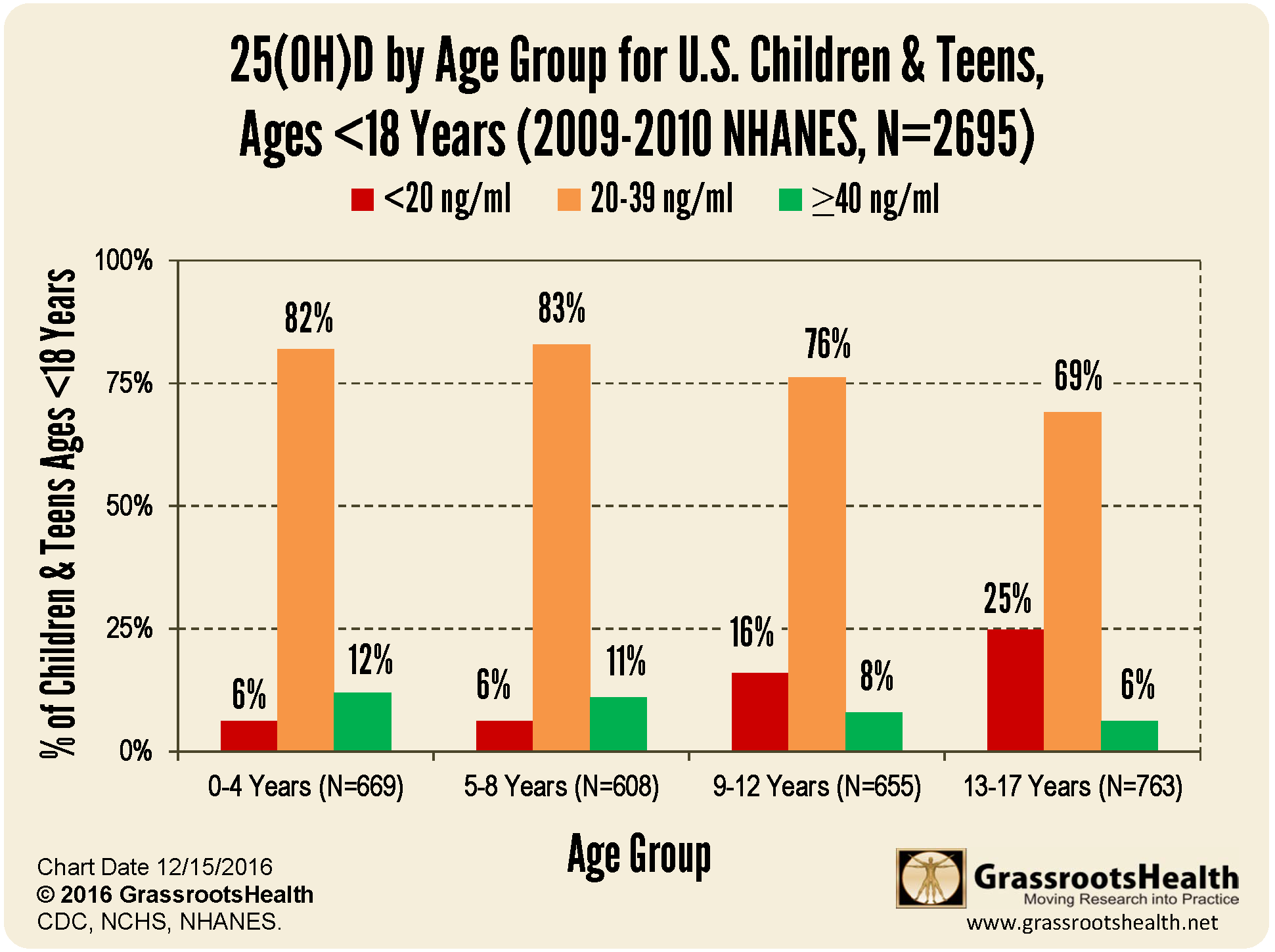Published on February 28, 2020
We love what we do at GrassrootsHealth. Our passion about nutrition and vitamin D shows in our work as well as our personal lives. Today, we would like to share a preview to a new analysis inspired by a story about one of our employees – a wake-up call, and a heavy reminder of how important it is to regularly test our children’s levels as well as our own!
My Son’s Vitamin D was 18 ng/ml!
 “I’m embarrassed to say that my son’s D result just came back at 18 ng/ml!!!” That was a hard ‘pill’ to swallow for one of our long-time employees, although it could certainly help explain the fatigue, muscle aches, and lack of focus he had been recently experiencing. With two children, who were a major part of her inspiration for joining GrassrootsHealth, a background in nutrition and complimentary health, and daily reminders of how important vitamin D especially is to our health, her 12 year old son still managed to end up so deficient in vitamin D! How could this have happened? His last test had been over a year prior… perhaps the assumption that he’d still be fine, although there had been many changes in their living situation and daily habits over the last year, trying to give him more independence and not hovering over him to make sure he took his supplements, and the fact that it was winter could have all contributed to the dramatic drop.
“I’m embarrassed to say that my son’s D result just came back at 18 ng/ml!!!” That was a hard ‘pill’ to swallow for one of our long-time employees, although it could certainly help explain the fatigue, muscle aches, and lack of focus he had been recently experiencing. With two children, who were a major part of her inspiration for joining GrassrootsHealth, a background in nutrition and complimentary health, and daily reminders of how important vitamin D especially is to our health, her 12 year old son still managed to end up so deficient in vitamin D! How could this have happened? His last test had been over a year prior… perhaps the assumption that he’d still be fine, although there had been many changes in their living situation and daily habits over the last year, trying to give him more independence and not hovering over him to make sure he took his supplements, and the fact that it was winter could have all contributed to the dramatic drop.
Could this also be a ‘normal’ trend for children?
Do Vitamin D Levels Decrease as Children Age?
A previous analysis looked at the National Health and Nutrition Examination Survey (NHANES) 2009-2010 data set for vitamin D trends among children (ages <18) with an overall break-down of vitamin D status by age group.
As illustrated in the chart above, as age increases:
- There is a decline in vitamin D levels, especially in children 9 years and above
- There is a 50% decline in the proportion with levels at or above 40 ng/ml, from 12% for ages 0-4 years, to 6% for ages 13-17 years
- There is a 4-fold increase in the proportion with levels below 20 ng/ml, from 6% for ages 0-4 years, to 25% for ages 13-17 years!
Stay Tuned…!
When looking at the above chart, we wondered if the same or similar trend would be seen among children in the GrassrootsHealth cohort. In our next post, we will share what we found!
Don’t wait. Test your children today!
Make sure you know your vitamin D level (and that of your children), and take steps to keep it within a target of 40-60 ng/ml or 100-150 nmol/L! Through GrassrootsHealth Nutrient Research Institute, you can also test your essential elements magnesium, copper, zinc and selenium, toxins such as lead, mercury and cadmium, as well as your omega-3 levels, inflammation levels and thyroid stimulating hormone (TSH) level. Find out your levels today! Log on to the test selection page (click the link below) to get your tests and see for yourself if your levels can be improved.
Make sure you track your results before and after, about every 6 months!
Click Here to Access the Test Page
How can I track my nutrient intake and levels over time?
To help you track your supplement use and nutrient levels, GrassrootsHealth has created the Personal Health Nutrient Decision System called
For each specific supplement, you can track what days you take it, how much, and many other details. This will help you know your true supplemental intake and what patterns of use work for you to reach and maintain optimum nutrient levels. Check it out today!









